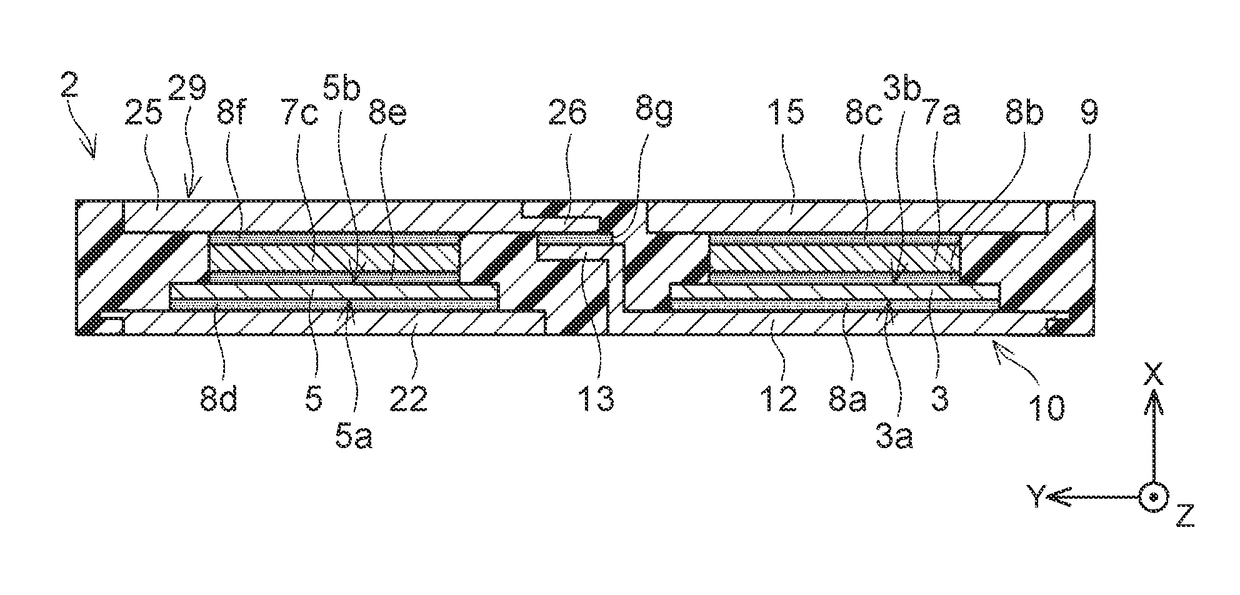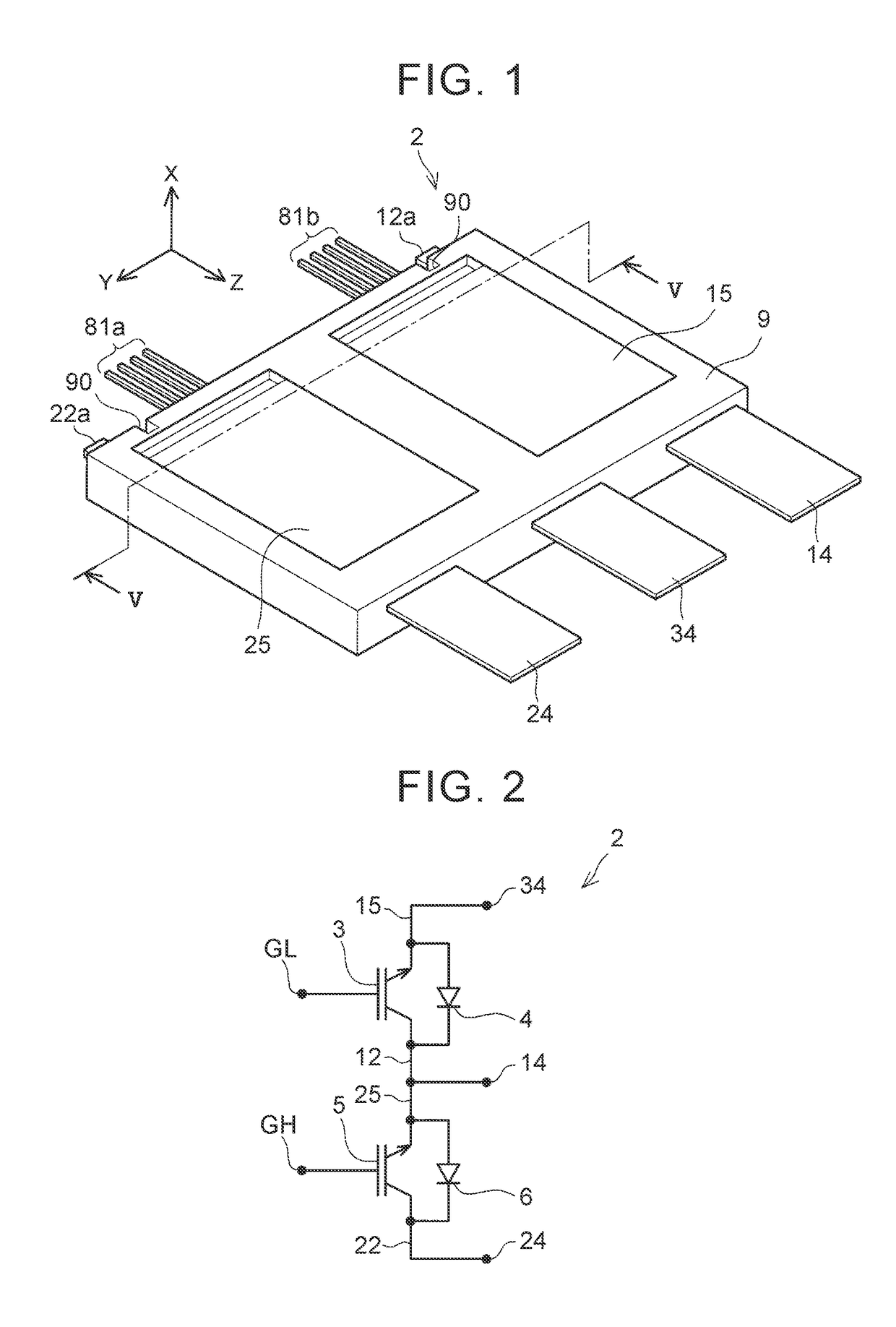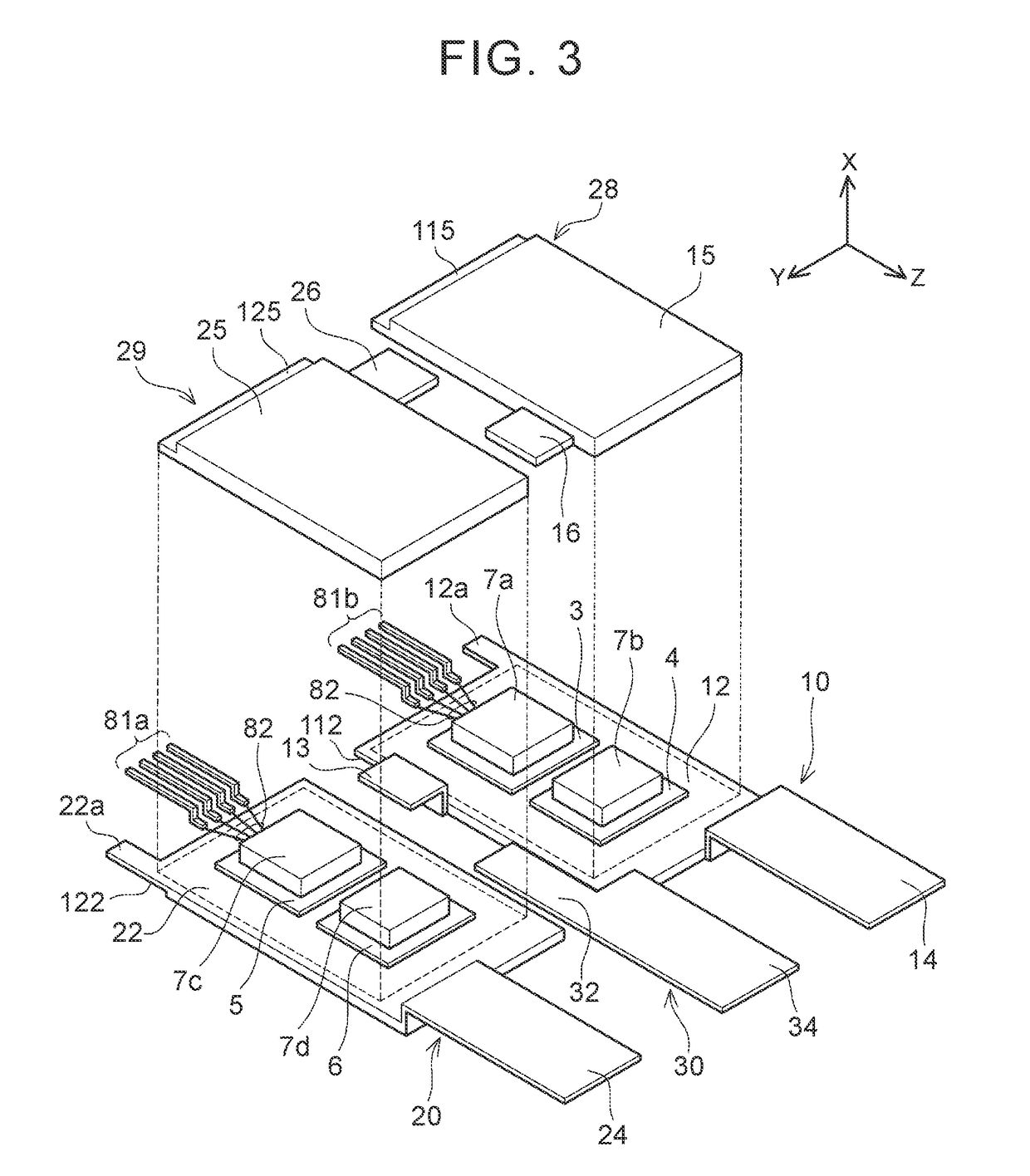Semiconductor device
a technology of semiconductor devices and semiconductors, applied in semiconductor devices, semiconductor/solid-state device details, electrical apparatus, etc., can solve the problems of reducing the contact area between the heat sink and the package, and achieve the effect of reducing the stress on the package, and increasing the distance between the recess portions
- Summary
- Abstract
- Description
- Claims
- Application Information
AI Technical Summary
Benefits of technology
Problems solved by technology
Method used
Image
Examples
embodiment 1
[0029]A semiconductor device 2 will be described with reference to the drawings. FIG. 2 is a diagram of a circuit incorporated in the semiconductor device 2. The semiconductor device 2 includes a first transistor element 3, a second transistor element 5, a first diode element 4, a second diode element 6, an N terminal 34, an O terminal 14 and a P terminal 24. Each of the first transistor element 3, the second transistor element 5, the first diode element 4 and the second diode element 6 has an ampacity of 100 amperes or more, and belongs to a power semiconductor element mainly used for electric power conversion. The semiconductor device 2 typically forms a part of an inverter circuit that supplies electric power to a drive motor in, e.g., an electric vehicle, a hybrid vehicle or a fuel cell vehicle.
[0030]The first transistor element 3 and the second transistor element 5 are connected in series. The first diode element 4 is connected in inverse parallel with the first transistor ele...
embodiment 2
[0049]As illustrated in FIG. 8, in the semiconductor device , each of thin portions 112, 115 of heat sinks 12, 15 are covered by a package 9. Each thin portion is sealed by the package 9 and is not exposed outside. Although not illustrated, thin portions 122, 125 of heat sinks 22, 25 each have a configuration similar to that of the heat sinks 12, 15. This configuration enables increase in area of contact between the heat sinks and the package 9, and thus enables further enhancement in power semiconductor element protection performance.
[0050]As illustrated in FIG. 9, in a semiconductor device according to Embodiment 3, thin portions 112, 115 are formed by reducing a thickness of respective parts on the inner face side of the heat sink 12, 15. The thin portions 112, 115 are formed by dents that are present in the inner faces of the heat sinks 12, 15, and the dents are sealed by the package 9. Although not illustrated, thin portion 122, 125 of heat sinks 22, 25 have a configuration sim...
embodiment 4
[0051]As illustrated in FIG. 10, in a semiconductor device , thin portions 115, 125 are formed by cutting a plurality of parts (in the present embodiment, three parts along the Y-axis direction on the periphery of an end portion in the negative direction of the Z axis) in an outer face of each of heat sinks 15, 25 into a cylindrical shape. The thin portions 115, 125 do not extend through the respective heat sinks vertically. Although not illustrated, thin portions 112, 122 of heat sinks 12, 22 have a configuration similar to that of the heat sinks 15, 25. Also, each of the thin portions 112, 122 is also located on a shortest distance between a relevant power semiconductor element and a relevant recess portion. This configuration causes stress generated by thermal expansion of the heat sinks to be dispersed toward the inside of the thin portions, enabling reduction of concentration of stress on the recess portions 90.
PUM
 Login to View More
Login to View More Abstract
Description
Claims
Application Information
 Login to View More
Login to View More - R&D
- Intellectual Property
- Life Sciences
- Materials
- Tech Scout
- Unparalleled Data Quality
- Higher Quality Content
- 60% Fewer Hallucinations
Browse by: Latest US Patents, China's latest patents, Technical Efficacy Thesaurus, Application Domain, Technology Topic, Popular Technical Reports.
© 2025 PatSnap. All rights reserved.Legal|Privacy policy|Modern Slavery Act Transparency Statement|Sitemap|About US| Contact US: help@patsnap.com



